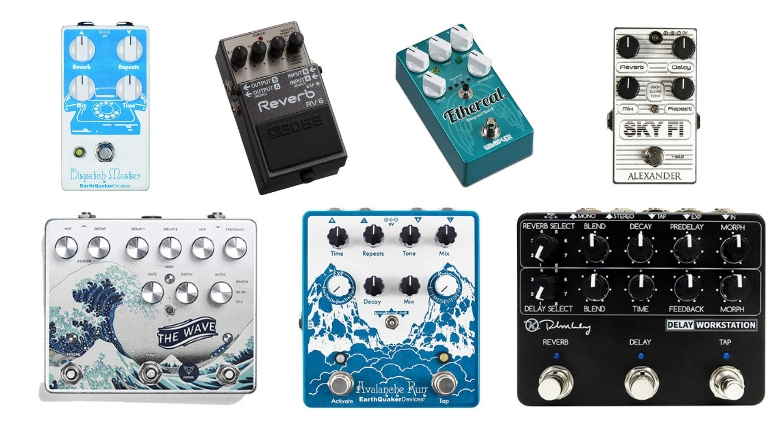
There are reverb pedals and there are delay pedals and then there are reverb delay pedals. Those elegant units that combine the two atmospheric, echoing effects into one pedalboard-friendly package. For this list, we’re focusing squarely on pedals that include, at the very least, a mode to combine delay and reverb, with preference given to those that can use them independently. In a few cases, delay is a mode and can’t be separated from the reverb, but for the most part a little knob tweaking or footswitchery will give you one or the other. Some of our picks are capable of much, much more than simply feeding a delay signal into a reverb, but that must be a setting. Hitting the sweet spot of utility, experimentation, and function, read on to learn about the best reverb delay pedals.
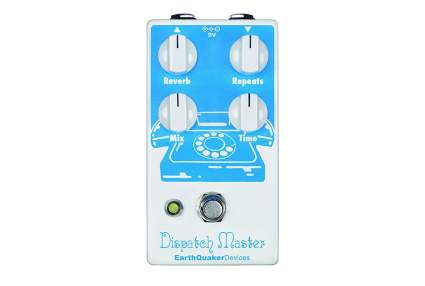
|
Amazon Customer Reviews
|
Price: $199.00 Shop at Amazon | Shop now Read our review |
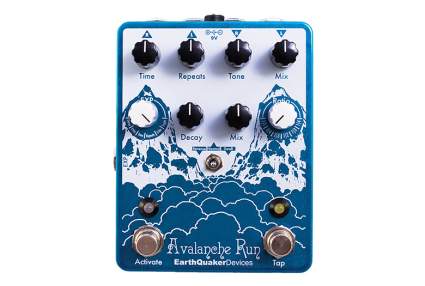
|
Amazon Customer Reviews
|
Price: $349.00 Shop at Amazon | Shop now Read our review |
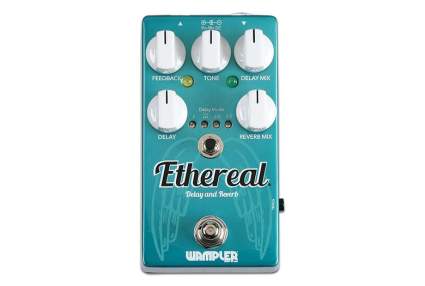
|
Amazon Customer Reviews
|
Price: $199.97 Shop at Amazon | Shop now Read our review |
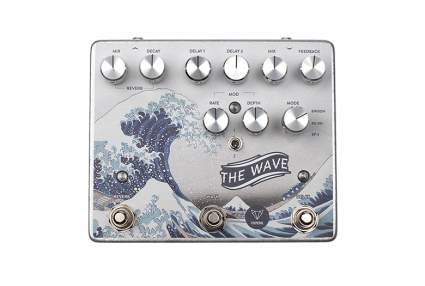
|
|
Price: $325.00 Shop now at Foxpedal | Shop now Read our review |
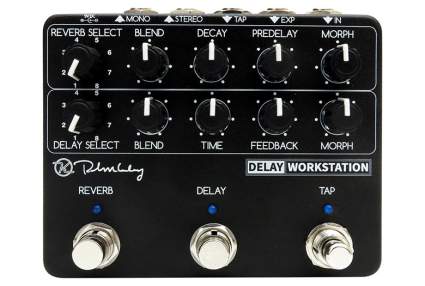
|
Amazon Customer Reviews
|
Price: $432.72 Shop at Amazon | Shop now Read our review |

|
Amazon Customer Reviews
|
Price: $295.73 Shop at Amazon | Shop now Read our review |
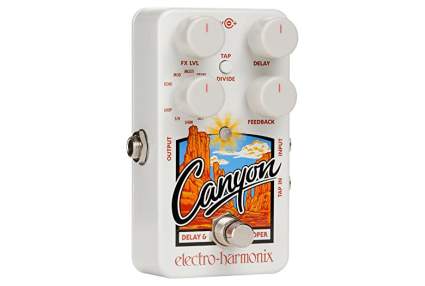
|
Amazon Customer Reviews
|
Price: $176.00 Shop at Amazon | Shop now Read our review |
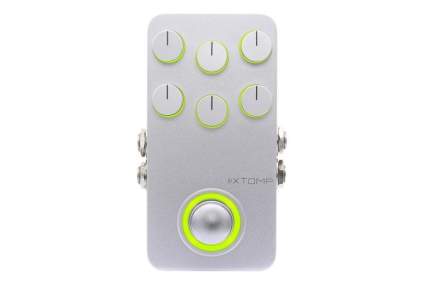
|
Amazon Customer Reviews
|
Price: $300.00 Shop at Amazon | Shop now Read our review |
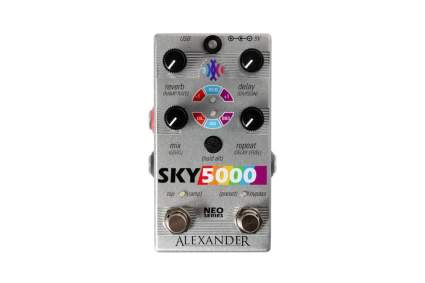
|
Amazon Customer Reviews
|
Price: $199.99 Shop at Amazon | Shop now Read our review |
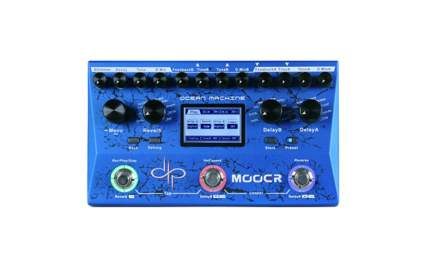
|
Amazon Customer Reviews
|
Price: $299.00 Shop at Amazon | Shop now Read our review |
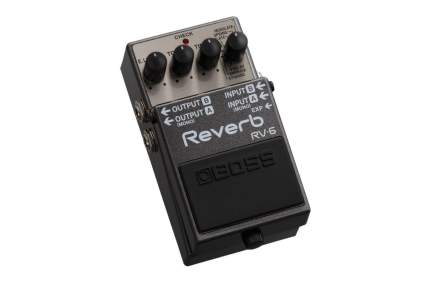
|
Amazon Customer Reviews
|
Price: $139.99 Shop at Amazon | Shop now Read our review |
-
1. EarthQuaker Devices Dispatch Master V3
Pros:- Extremely effective and intuitive
- Up to 1.5 seconds of delay
- Compact size
Cons:- No tap tempo
- No choice of reverb types
- Not stereo
An absolute monster of the genre, this is EarthQuaker’s number one selling pedal, which is pretty impressive considering its stablemates. Despite this tiny package and relatively unassuming details, the DM may just replace a few of the pedals at the end of your chain. I cannot overstate just how often I come across someone playing one of these, and for good reason. Everything from straight utilitarian to absurdist experimental resides in this pedal.
Controls on this include Reverb, Repeats, Time, and Mix. The Time knob selects a delay time between zero and 1.5 seconds. The Repeats knob controls regeneration and in Reverb mode simultaneously adjusts parameters for decay, thickness, and depth. Reverb and Mix are self-explanatory except to say that with Reverb all the way down, this is a simple but brilliant digital delay.
To use as just a reverb pedal, turn the Time knob all the way down. The reverb range is huge, going from slapback to cavernous, with the voicing focused more on a room (albeit a very big one at times) rather than spring or plate. A fine place to start when exploring this type of pedal.
Consider searching for this on Reverb to find used examples or sell your gear toward a purchase.
Specs:
- Delay type: Digital
- Delay time: Zero to 1,500 milliseconds
- Tap tempo?: No
- Expression input?: No
- Stereo outs: No
- True bypass?: Yes
- Reverb type: Room/Hall
- Mechanism for separating delay and reverb: Reverb and Time knobs
Find more EarthQuaker Devices Dispatch Master V3 information and reviews here.
-
2. EarthQuaker Devices Avalanche Run V2
Pros:- Assignable expression pedal function
- Fully stereo
- Flexi-Switch for both momentary & latch
Cons:- Relatively massive current draw - do not daisy chain
- No presets
- Only one reverb voice
Speaking of stablemates, if you like the idea of the Dispatch Master but need more functionality, the Avalanche Run is the pedal for you. Once again harnessing extremely high-end DSP, this pedal adds a bevy of functions that help make it more useful especially in a live band context, like tap tempo and expression control.
Knobs on this tone machine are divided into sections. The top row controls the delay and consists of Time, Repeats, Tone, and Mix. The bottom middle knobs of Decay and Mix control the reverb side and are flanked by two function knobs. On the left, the EXP knob allows you to set what an external expression pedal controls among Decay, R[everb] Mix, Repeats, D[elay] Mix, Toggle, and Time.
Setting the expression to Toggle controls the switch below that selects from Both (normal delay and reverb), Reverse (reverse delay with normal reverb), and Swell (total input volume swell based on picking dynamics). The Time expression control is interesting in that it varies significantly from the normal knob’s function. When using an expression pedal, you can achieve far more extreme effects than possible with the knob.
In addition to all that, there’s a Tap button for tap tempo, which is further controlled by the Ratio knob. Options on the Ratio knob include subdivisions for quarter note, dotted eighth, quarter note triplet, eighth note, eighth note triplet, and sixteenth note. The Tap switch also has hold functions. In Normal and Swell modes, holding the Tap switch dials up self-oscillation, while in Reverse mode, you can temporarily switch back to Normal mode until released.
To finish it all off, you get stereo ins and outs and selectable true bypass and trails as well as Flexi-Switch switches so you can use them both as momentary and latching. Within that selection, you can choose from five different trails lengths. One minor drawback to having all these goodies is that the current draw is a fairly beastly 425 milliamps (that’s significantly more than a Strymon, for those keeping track at home), so break out your finest power supply for this puppy.
A powerhouse device built as much for straightforward, everyday use as it is for ambient madness.
Consider searching for this on Reverb to find used examples or sell your gear toward a purchase.
Specs:
- Delay type: Digital
- Delay time: Zero to 2,000 milliseconds
- Tap tempo?: Yes
- Expression input?: Yes
- Stereo outs: Yes
- True bypass?: Yes, with optional buffered trails
- Reverb type: Plate
- Mechanism for separating delay and reverb: Dedicated Mix knobs
Find more EarthQuaker Devices Avalanche Run information and reviews here.
-
3. Wampler Ethereal Reverb Delay Pedal
Pros:- Very easy to dial in
- Delay subdivision selector
- Low current draw for what it is
Cons:- No tap tempo
- No expression jack
- Not stereo
This is Wampler’s version of the Dispatch Master. In typical Wampler fashion, the vision for this pedal was focused solely on calling up a usable setting as quickly as possible. It varies from the DM somewhat in that it includes a subdivision button for the delays — yep, delays, plural. The standard quarter note delay is separate from its subdivided partner so you can call up the magical quarter plus dotted eighth without any other messing about.
Controls on this unit are simplified to Delay (from zero to one second), Feedback, and Tone, with dedicated Delay Mix and Reverb Mix over on the right side. The Delay Mode switch controls the addition of the second delay to handle subdivisions. The selectable trails mode is not an inconvenient internal dipswitch, but rather a handy Trails switch on the right hand side.
While there’s no tap tempo, there is an LED that offers visual feedback of your delay rate. Can be run at 9 or 18 volts at a much more reasonable sub-70 milliamps, if those details are important for you.
Consider searching for this on Reverb to find used examples or sell your gear toward a purchase.
Specs:
- Delay type: Digital
- Delay time: Zero to 1,000 milliseconds
- Tap tempo?: No
- Expression input?: No
- Stereo outs: No
- True bypass?: Yes, with optional buffered trails
- Reverb type: Plate
- Mechanism for separating delay and reverb: Dedicated Mix knobs
Find more Wampler Ethereal information and reviews here.
-
4. Foxpedal The Wave
Price: $325.00Pros:- Momentary Wash switch for oscillation
- Three delay voices with dual delay times
- Separate footswitchable reverb and delay
Cons:- No presets
- Not stereo
- No tap tempo
This pick owes a large debt of gratitude to the pedal that precedes it, the 1776 Multiplex Echo Machine Deluxe Delay. Foxpedal sought and obtained permission to produce this lovely version, which makes some slight modifications both visual and functional. The primary thrust of this pedal is the marriage of vintage-type effects: three flavors of analog and tape delay cascaded into a spring reverb.
To begin with, the top left controls of Mix and Decay address the reverb section of the unit. While you can turn the reverb mix all the way down, the left-most footswitch disengages the reverb entirely. The rest of the controls adjust parameters for the delay circuit, which is selectable with the Mode knob between a Binson Echorec, Roland RE-201 Space Echo, and Maestro Echoplex EP-3.
In Echorec and Space Echo modes, you have two delays, the times for which are controllable with the Delay 1 and Delay 2 knobs. In Echoplex mode, only one delay is active and the maximum delay time is half as long. All delays are controlled with the Mix and Feedback knobs.
The Mod controls allow you to choose which delay (or neither) gets the tape warble controlled by the attendant Rate and Depth knobs. Using this, you can achieve some mangled sounds that would certainly have destroyed the vintage tape units in question at the time. You can also disable the delay completely with the far right footswitch.
Differing somewhat from the 1776 version, the Wash momentary switch controls feedback rather than the speed of Delay 2, bringing you all that oscillating goodness all modern ambient pedals are required by law to have now. Another difference seems to be the choice of reverb chip, as this version utilizes the Belton BTDR-3H block for its springy goodness.
Choose this if you’re in need of modern recreations of all-time great delays but don’t want to buy three pedals to get there.
Consider searching for this on Reverb to find used examples or sell your gear toward a purchase.
Specs:
- Delay type: Tape and analog
- Delay time: Up to 1,200 milliseconds on Echorec and Space Echo modes; 30 to 600 milliseconds on Echoplex mode
- Tap tempo?: No
- Expression input?: No
- Stereo outs: No
- True bypass?: Yes
- Reverb type: Spring
- Mechanism for separating delay and reverb: Footswitch
Find more Foxpedal The Wave information and reviews here.
-
5. Keeley Delay Workstation
Pros:- Eight delay modes and six reverb modes
- Tap tempo
- Separate footswitchable reverb and delay
Cons:- Only mono in, despite having stereo outputs
- No presets
- A pedal like this would really benefit from MIDI functionality
Three modes of delay are nice, but what if you could have eight? This handy little unit from Keeley condenses a litany of devices from other sources and integrates them into a super-usable unit with all the finesse expected from his workshop. While the previous items on this list may focus a bit more on inspiration and performance, this could prove a valuable addition to a sound design studio, though of course it would be no slouch on the road, either.
The controls are split into two banks to control the delay and reverb separately, both of which are engaged with independent footswitches. The top bank is for reverb and includes a mode selector knob, Blend, Decay, Predelay, and Morph. The Morph control changes function with each reverb type and adjusts things like tone, filter, and octave up level.
Technically, there are only six modes of reverb because the last two slots are options for a second delay — your choice of digital or tape. Available in the six are your standards like spring, hall, and plate, and weird ones like shimmer and flange. The expression pedal input controls the reverb decay.
The second bank of controls is for the delay. Delay Select, Blend, Time, Feedback, and Morph, where Morph in this case can control things like modulation, ducking ratio, octave, and subdivision. All the vintage-y delay types are in here, but the true standout is probably the Ducking delay, which tracks your attack and only fills in the echos after you’ve finished playing the notes.
Keeley lovers may also want to take a peek at the freshly updated Caverns, which combines modulated tape delay with your choice of spring, modulated, or shimmer reverb in a smaller package.
Consider searching for this on Reverb to find used examples or sell your gear toward a purchase.
Specs:
- Delay type: Slapback, Tape, Multi-Head, Analog, Digital, Subdivided, Ducking, Pitch
- Delay time: Unknown, but safe to say it’ll be enough
- Tap tempo?: Yes
- Expression input?: Yes
- Stereo outs: Yes
- True bypass?: Yes
- Reverb type: Spring, Chamber, Hall, Plate, Shimmer, Flanged
- Mechanism for separating delay and reverb: Footswitch
Find more Keeley Delay Workstation information and reviews here.
-
6. Strymon El Capistan dTape Echo
Pros:- Tap tempo
- Incredibly good tone
- Capable of 100% wet
Cons:- Only one flavor of delay and reverb, the latter of which is hidden at first
- Presets are only possible with the addition of the Strymon Favorite switch
- Only mono in, despite stereo outs
Strymon are dedicated to tonal perfection via their programming skills, using high-end DSP to achieve their high-fidelity sounds. All of their pedals are powerhouse units with extreme degrees of flexibility and options aplenty. This unit focuses solely on recreating Echoplex and Space Echo style tape sounds, but deserves a mention on this list because of a hidden gem: a fantastic spring reverb living amongst the secondary functions.
The obvious controls all relate to the tape delay. First, choose your mode using two switches. The first, Tape Head, which selects from Fixed Tape head, Multi Tape head, and Single Head. In Fixed Tape, the Time knob controls the tape speed while the Mode switch chooses between 1/16th note (A), dotted 18th note (B), and 1/4 (C). In Multi Head mode, the Time knob varies the tape speed while the Mode switch chooses which playback heads are active.
In Single Head mode, the tape speed is fixed by the Mode switch (A is double speed, B is normal, and C is Sound on Sound), while the time knob moves the position of the head. Sound on Sound mode plays the entire tape loop, including whatever was recorded before switching to C as recording is always enabled. You can choose new tape splice points by pressing the Tap switch.
Otherwise, you get controls for Tape Age, which controls the bandwidth and thus the overall brightness, Repeats, and Wow & Flutter, which sets the naturally occurring modulation that old tape units would effect. The Mix knob is an all-analog control that goes from 100 percent dry to 100 percent wet.
If you turn down any of the parameter knobs and then hold down both the Tap and Bypass buttons, the unit will switch to the secondary parameters. The Time knob becomes the level knob for the spring reverb — the very function that puts this pedal on this list. The Tape Age knob becomes Low End Contour, which rolls off the lows as a vintage machine would do. Repeats becomes Tape Bias and allows you to control the overall headroom. Wow & Flutter becomes Tape Crinkle, which emulates dust, friction, and tape damage independent of the Tape Age control. Finally, Mix becomes a Boost/Cut knob, allowing for a 3 dB boost or cut.
Consider searching for this on Reverb to find used examples or sell your gear toward a purchase.
Specs:
- Delay type: Tape
- Delay time: 25 to 1,500 milliseconds, depending on Tape Head and Mode selections
- Tap tempo?: Yes
- Expression input?: Yes
- Stereo outs: Yes
- True bypass?: Yes, with optional buffered trails
- Reverb type: Spring
- Mechanism for separating delay and reverb: Secondary function of the Time knob controls reverb level
Find more Strymon El Capistan dTape Echo information and reviews here.
-
7. Electro-Harmonix Canyon
Pros:- Up to three seconds of delay
- 11 modes in a tiny package
- Includes a 62 second looper
Cons:- Reverb is only a setting; delay and reverb can't truly be used together
- Not stereo
- No presets
Speaking of multi-functional, this very recent release from Electro-Harmonix packs a huge degree of functionality into a super small container. Even the Strymon above looks massive compared to this standard MXR/bud box size unit. Contained in here are ten distinct delays, a plate reverb, and a 62 second looper. Think about how many pedals you could replace with this device just on the face of that alone. Even better, one of those delays is a Deluxe Memory Man emulation, so if you happen to carry around one of those massive pedals, you could consider downsizing to this for some uses.
To be totally fair to the other options on this list, the plate-style reverb is only available on one of the 11 modes contained herein — helpfully labeled Verb. When on the Verb mode, you can turn the Feedback knob all the way down and use it simply as a reverb pedal, with the Delay knob controlling the predelay. Otherwise, the controls are as you’d expect, including FX Level, Delay, and Feedback, in addition to the 11-way mode selector switch.
The Tap/Divide button in the middle performs a few functions. First, by pressing the button when you’ve set a tap tempo, you can cycle through subdivisions. The LED will change accordingly for the following settings: Red is 1/4 notes, orange is dotted 1/8th notes, and green is 1/8th notes. If you hold the Tap/Divide button for one second, you enter Secondary Knob mode. These controls are regulated by the Delay and Feedback knobs. They’re available on all but the Echo and Loop modes and control varying functions according to the mode you’re using to include modulation, attack sensitivity, volume swell and more.
What it lacks in pure delay-reverb combo functionality, it more than makes up for in being the pedal equivalent of a Swiss army knife for time-based effects.
Need more? Upgrade to the Grand Canyon.
Consider searching for this on Reverb to find used examples or sell your gear toward a purchase.
Specs:
- Delay type: Digital, Modulated, Multi-tap, Reverse, Analog, Tape, Verb, Octave, Shimmer, Sample & Hold
- Delay time: Five to 3,000 milliseconds
- Tap tempo?: Yes
- Expression input?: No, but you can use an external tap
- Stereo outs: No
- True bypass?: Yes, with optional buffered trails
- Reverb type: Plate
- Mechanism for separating delay and reverb: Reverb is one of the delay modes
Find more Electro-Harmonix Canyon information and reviews here.
-
8. Hotone Xtomp Bluetooth Modeling Effects Pedal
Pros:- More than just a delay reverb; can be loaded with a multitude of effects
- Fully stereo
- Tap tempo
Cons:- Must load each delay reverb profile separately
- Some reports of software updates bricking the unit
- Not everyone will like app-editing effects
Admittedly, using any kind of modeling multi-effects pedal cheats just a little bit. The inclusion of this on our list springs from two elements that qualify it. For one thing, it only takes up as much space as a single effect pedal. It’s not meant to stand in for a whole chain like a multi-effects unit can. Second, the Xtomp has models for pedal pairings that make it perfect for this use, powered by powerful Texas Instruments DSP chip.
The three delay-reverb pairings available as of today are: Mag Hall, Backroom, and Triplet.
The Mag Hall preset pairs a reverse delay with a room reverb. Controls for this setting are Reverb Mix, Tone, Reverb Decay, Delay Mix, Time, and Feedback. The range of delay on this and Backroom are both 20 to 1,000 milliseconds, and Backroom shares the same control layout. Mag Hall also allows you to use tap tempo by holding the footswitch to cycle the mode on or off. Triplet is also tap tempo ready, but the control set is a little different. The knobs on this setting are assigned to Delay Mix, Feedback, Time, Reverb Mix, Decay, and High Damp, which lets you dial in a low-pass filter.
Aside from those, there are dozens of other effects and models to choose from, so this is another very versatile tool for your pedal arsenal.
Consider searching for this on Reverb to find used examples or sell your gear toward a purchase.
Specs:
- Delay type: Tape, Sweep, and Reverse
- Delay time: 20 to 1,000 milliseconds, depending on model
- Tap tempo?: Yes
- Expression input?: No
- Stereo outs: Yes
- True bypass?: Yes
- Reverb type: Hall, Plate, and Room
- Mechanism for separating delay and reverb: Dedicated Mix knobs
Find more Hotone Xtomp Bluetooth Modeling Effects Pedal information and reviews here.
-
9. Alexander Pedals Sky 5000
Pros:- Tap tempo, ramp, and presets
- Unique sound
- Three modes for different tonality
Cons:- Not true bypass (used for the adjustable trails)
- This effect style is not for everyone
- Delay times limited compared to other offerings
This pedal takes a pretty unique approach compared to the others on this list. Both the delay and the reverbs in this pedal are digital and that is an intentional decision. The delay is a high-fidelity digital effect for perfect, clear repeats.
This is a continuation of the previous Sky Fi pedal, meant to emulate inexpensive digital rack units from the 80s and 90s that suffered from hardware limitations that caused the reflections to build up on themselves over time as an unintended artifact. From that sprung a love of these units that continued to build up as you played them, so Alexander sought to recreate that function in a compact pedal.
Controls include Reverb to set the level, which doubles as the Ramp rate when the Select button is held down to activate the alternate controls. Delay, Mix, and Repeat all work as expected, with the range of the Delay changing with the selected Mode. Each of those also control the tap tempo note Division, overall pedal Level, and Delay Level, respectively.
Using the Select button, you can choose between Dig, a 90s digital delay, BBD, a warm analog delay, and OIL, an oil can delay. Reverb modes let you choose between the standard slow-building, diffuse 90s style reverb, while the +1 and -1 add up octave or down octaves to the reverb.
Unlike the Sky Fi that came before it, the Sky 5000 now has two footswitches. One is for Tap Tempo or Ramp, depending on your settings. The other is Bypass on a single click or to select between four presets (expandable to 16 when using a MIDI controller) on hold.
While there’s no dedicated stereo outs, you can employ a stereo TRS cable to form a wet/dry split to affect a stereo signal of a sort, if you like. This is definitely not a pedal for everyone, but it is a very specific, neat effect.
Consider searching for this on Reverb to find used examples or sell your gear toward a purchase.
Specs:
- Delay type: Digital
- Delay time: Zero to 700 milliseconds, depending on mode
- Tap tempo?: Yes
- Expression input?: Yes
- Stereo outs: No, but you can use a TRS for wet/dry
- True bypass?: No
- Reverb type: Digital
- Mechanism for separating delay and reverb: Reverb level knob, secondary Delay level knob function
Find more Alexander Pedals Sky Fi information and reviews here.
-
10. Mooer Ocean Machine Reverb Delay Pedal
Pros:- 15 different delays and nine different reverbs
- Presets with MIDI capability
- Fully stereo, tap tempo, expression jack
Cons:- Mooer not exactly known for longevity
- You'll have to put in the time to program this
- Sound quality not quite able to keep up with competitors
I know, I know. It’s a Mooer, so it would appear that there is an entire extraneous digit on the price of this pedal. Indeed, they make a delay-reverb combo pedal in their usual mini form factor called the EchoVerb that comes in under $100. Given the power and flexibility of the rest of the options on this list, I thought it only fair that we include this massively ambitious offering from Mooer, which is the signature pedal for Devin Townsend, named after his 1997 album Ocean Machine: Biomech as it was later reissued.
This is a beast of a unit, easily edging into Strymon TimeLine/BlueSky territory. Lest I keep you here reading this all day, I’ll just give you a brief overview of the controls that are apparent as you look at the device, but know that there are many varied functions hiding beneath the Menu knob and the Setting, Store, Preset, and Back buttons. The screen readout will help you navigate the dense world of this pedal where there are 17 delays, nine reverbs, freeze, and a 44 second looper. Any parameters you dial in can be saved and instantly recalled.
First, there are two delays and a reverb, all of which are engaged with dedicated footswitches. Choose the mode for each of them using the Reverb, DelayB, and DelayA knobs. The parameters of each are controlled with dedicated knobs across the top of the unit. Shimmer dials in the up-octave sound, Decay, Tone, and R. Mix are all standard. For each delay, there is a Feedback, Time, Tone, and D. Mix knob. This covers the primary function and would probably leave you set for life among just those options.
Enter looper mode by holding down the Delay A and Delay B footswitches simultaneously, whereupon the Menu knob becomes a master level for the loop playback. If you hold down the Reverb and Delay B footswitches simultaneously, you enable tap tempo. This launches into global tap tempo, adjusting the rate for both delays, but if you press Reverb again, you can set different tempos for each delay.
Ins and outs cover all you’d ever need, including an expression input, stereos ins and outs, and MIDI in and through for remote triggering purposes. To top it all off, you can change the order of effects however you like, saving presets into a total of 24 slots. What’s nice about the way they’ve constructed this is that you could feasibly use it for an entire career without needing to dive into the on-screen Menu options. But for the price, you’ll certainly want the ability to dig deeper.
Consider searching for this on Reverb to find used examples or sell your gear toward a purchase.
Specs:
- Delay type: Digital, Analog, Tape, Echo, Liquid, Rainbow, Crystal, Low-Bit, Fuzzy, Real, Dyna, Galaxy, Tri-Mod, Mod-Inv
- Delay time: Up to 2,000 milliseconds
- Tap tempo?: Yes
- Expression input?: Yes
- Stereo outs: Yes
- True bypass?: Yes
- Reverb type: Room, Hall, Plate, Distorted, Flanger, Filter, Reverse, Spring, Modulated
- Mechanism for separating delay and reverb: Footswitch and dedicated mix knobs
Find more Mooer Ocean Machine information and reviews here.
-
11. Boss RV-6 Digital Reverb Pedal
Pros:- Legendary Boss reliability
- Eight total modes of reverb
- Fully stereo with expression input
Cons:- No tap tempo
- Trails cannot be turned off
- Set it to +Delay and forget it because the modes are really jammed into the rotary switch
Wth the exception of the Canyon, all the pedals on our list pretty much fall into two camps: boutique handmade pedals and slightly overengineered Chinese modelers. All of them are great pedals, of course, but if all you want is strictly reliable functionality, you must also consider something from Boss. The latest in their line of excellent, tried-and-tested digital reverb pedals is the RV-6, which, in addition to seven modes of the expected reverb types has a +Delay setting.
That’s not entirely new to the RV line, as the RV-3 offered both (it was even called the Digital Reverb/Delay), but now that functionality has returned in a fully modern offering. The RV-6 is also better than its predecessor due to the presence of stereo ins as well as outs and an expression pedal input. Input A passes through your dry path in addition to the reverb sound in mono mode, while Input B is wet only, which gives you options for routing and can make for a huge sound. Also, unlike Chinese counterparts, operation is virtually silent.
Controls on the RV-6 include the Mode knob for selecting between the eight modes of Modulate, Spring, Plate, Hall, Room, Dynamic, Shimmer and +Delay, as well as Effect Level, Tone, and Time. Dead simple to use, just as with most Boss pedals.
Two notable drawbacks, depending on your needs: 1. It’s not true bypass. Still, Boss buffers are pretty good and a large board will actually benefit from these. 2. The trails cannot be defeated. It will ring out even after you disengage the effect.
This is certainly the best of the compact reverbs Boss has ever made and offers functionality to rival any competitor. Within the Boss family, you can go a step (or 12) further with the Boss RV-500 Reverb, which also has delay hiding under the hood, should you need it, but of course is a mega-verb and thus is both much more expensive and more complicated to use.
Consider searching for this on Reverb to find used examples or sell your gear toward a purchase.
-
Specs:
- Delay type: Digital
- Delay time: Unknown
- Tap tempo?: No
- Expression input?: Yes
- Stereo outs: Yes
- True bypass?: No
- Reverb type: Modulate, Spring, Plate, Hall, Room, Dynamic, Shimmer and +Delay
- Mechanism for separating delay and reverb: Delay is one of the reverb modes
Find more Boss RV-6 Digital Reverb Pedal information and reviews here.
What is a reverb delay pedal?
If you're a guitar player and you're into pedals, you should be watching That Pedal Show. If you are, chances are you saw the episode that introduced their "Pick'N'Mix" format, wherein Dan and Mick go for a test drive through their new pedal acquisitions.
In it, just before the 45 minute mark, Mick asks, "Why don't every pedal manufacturer on Earth make a delay and reverb pedal?" He goes on to suggest that it's the most natural pairing, right up there with boost and overdrive — something we covered in our best boost and overdrive combo pedals post.
Indeed, given that delays and reverbs are often the last thing in the effects chain, and given that they do similar jobs, and given that selecting badly-matched individual units can really mar your whole setup, it would seem a logical thing to pack them together into one enclosure. Whether you have a massive board and can't make room for separate units or you're in the opposite camp of having a super stripped-down mini board, opting for one of these pedals can deliver all the musical tone and usefulness found in individual pedals.
For modern players, it's not unusual to use these combo pedals as utility players after a more specialized delay. It's not that these are basic or boring; these pedals offer plenty of flavor and function despite their small size. They provide just the right amount of cascading atmospheric effects without adding unnecessary complexity to your rig.
Where does a reverb delay pedal go in my signal chain?
Conventional wisdom says to put these units at the end of your signal path, the last thing before the amp. This is closest to where the reverb would be if you were using the unit built into your amplifier.
One advantage of these is that you can dial in an always-on mild delay and your perfect reverb leave it on at all times. If you have an effects loop in your amp, you might consider leaving this pedal on top of it, rather than have it take up space on your board.
One disadvantage, of course, is that for the majority of these, it's not possible to put pedals between the two effects. These are specifically designed with that in mind though, and there are many pedals out there that can come before them.
That said, putting one of these before your dirt pedals can also yield some pretty great results and I strongly recommend trying it at least once.
See Also: